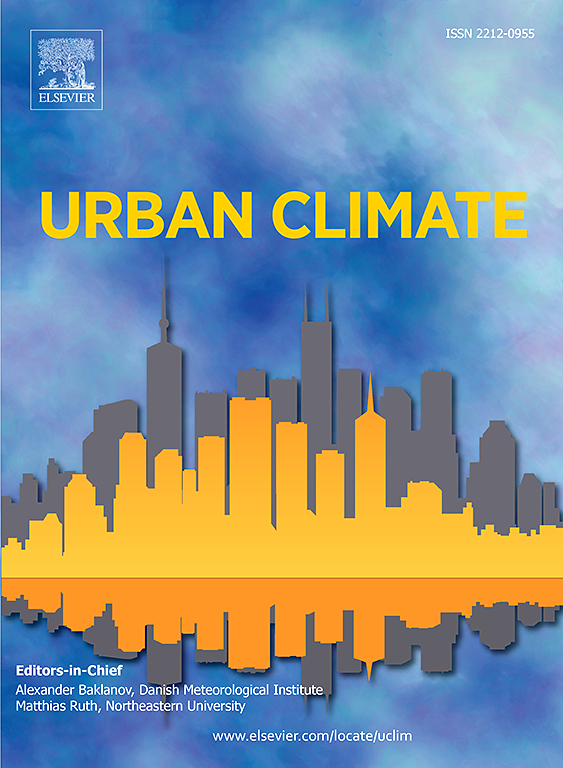中国北方低碳技术创新效率的空间网络特征及驱动因素
IF 6.9
2区 工程技术
Q1 ENVIRONMENTAL SCIENCES
引用次数: 0
摘要
中国生态文明建设已进入以减碳为关键战略方向的关键时期。探索低碳技术创新效率的网络结构,可以为推进国家绿色低碳发展提供科学依据和实践参考。本文以北方地区131个地级市为研究对象,采用基于加速遗传算法的投影寻踪模型、修正重力模型和社会网络分析,探讨2010-2023年低碳技术创新效率的空间网络关联特征及影响因素。结果表明:北方地区低碳技术创新效率呈现“东部地区+东部地区+东部地区+东部地区”的格局;中部地区>;东北地区>;“西部地区”,局部动态特征与非均衡特征并存。北部地区低碳技术创新效率总体网络密度呈现“东部+东部”的格局;中部地区>;东北地区>;“西部地区”,具有明显的节点特征。随着时间的推移,北方地区低碳技术创新效率空间关联的整体网络结构朝着密度化、多样化和稳健性的趋势发展。双向溢流板发展迅速。北京、天津、济南、郑州已成为辐射带动周边地区发展的重要中心城市。空间趋同分析表明,北方地区城市低碳技术创新效率的趋同特征和追赶效应显著。环境规制、创新人才储备、创新环境和FDI成为影响北方地区低碳技术创新效率网络形成和发展的重要因素。本文章由计算机程序翻译,如有差异,请以英文原文为准。
Spatial network characteristics and driving factors of low-carbon technology innovation efficiency in northern China
China's ecological civilization construction has entered a critical period with carbon reduction as the key strategic direction. Exploring the network structure of low-carbon technology innovation efficiency can offer a scientific basis and practical reference for advancing national green and low-carbon development. Taking 131 prefecture-level cities in the northern region as research objects, this paper employs the accelerated genetic algorithm-based projection pursuit model, modified gravity model and social network analysis to explore the spatial network correlation characteristics and influencing factors of low-carbon technology innovation efficiency during 2010–2023. The results show that the low-carbon technology innovation efficiency in the northern region presents a pattern of “the east region > the central region > the northeast region > the west region”, with local dynamic characteristics and unbalanced characteristics co-existing. The overall network density of low-carbon technology innovation efficiency in the northern region presents a pattern of “the east region > the central region > the northeast region > the west region”, with obvious node characteristics. As time passes, the overall network structure of the spatial correlation of low-carbon technology innovation efficiency in the northern region develops toward the trend of density, diversification and robustness. The bidirectional overflow plate is developing rapidly. Beijing, Tianjin, Jinan and Zhengzhou have become important central cities to radiate and drive the development of surrounding areas. The spatial convergence analysis shows that the convergence characteristics and catch-up effect of low-carbon technology innovation efficiency of cities in the northern region are significant. Environmental regulation, reserve of innovative talents, innovation environment and FDI emerge as important factors influencing the formation and development of low-carbon technology innovation efficiency network in the northern region.
求助全文
通过发布文献求助,成功后即可免费获取论文全文。
去求助
来源期刊

Urban Climate
Social Sciences-Urban Studies
CiteScore
9.70
自引率
9.40%
发文量
286
期刊介绍:
Urban Climate serves the scientific and decision making communities with the publication of research on theory, science and applications relevant to understanding urban climatic conditions and change in relation to their geography and to demographic, socioeconomic, institutional, technological and environmental dynamics and global change. Targeted towards both disciplinary and interdisciplinary audiences, this journal publishes original research papers, comprehensive review articles, book reviews, and short communications on topics including, but not limited to, the following:
Urban meteorology and climate[...]
Urban environmental pollution[...]
Adaptation to global change[...]
Urban economic and social issues[...]
Research Approaches[...]
 求助内容:
求助内容: 应助结果提醒方式:
应助结果提醒方式:


